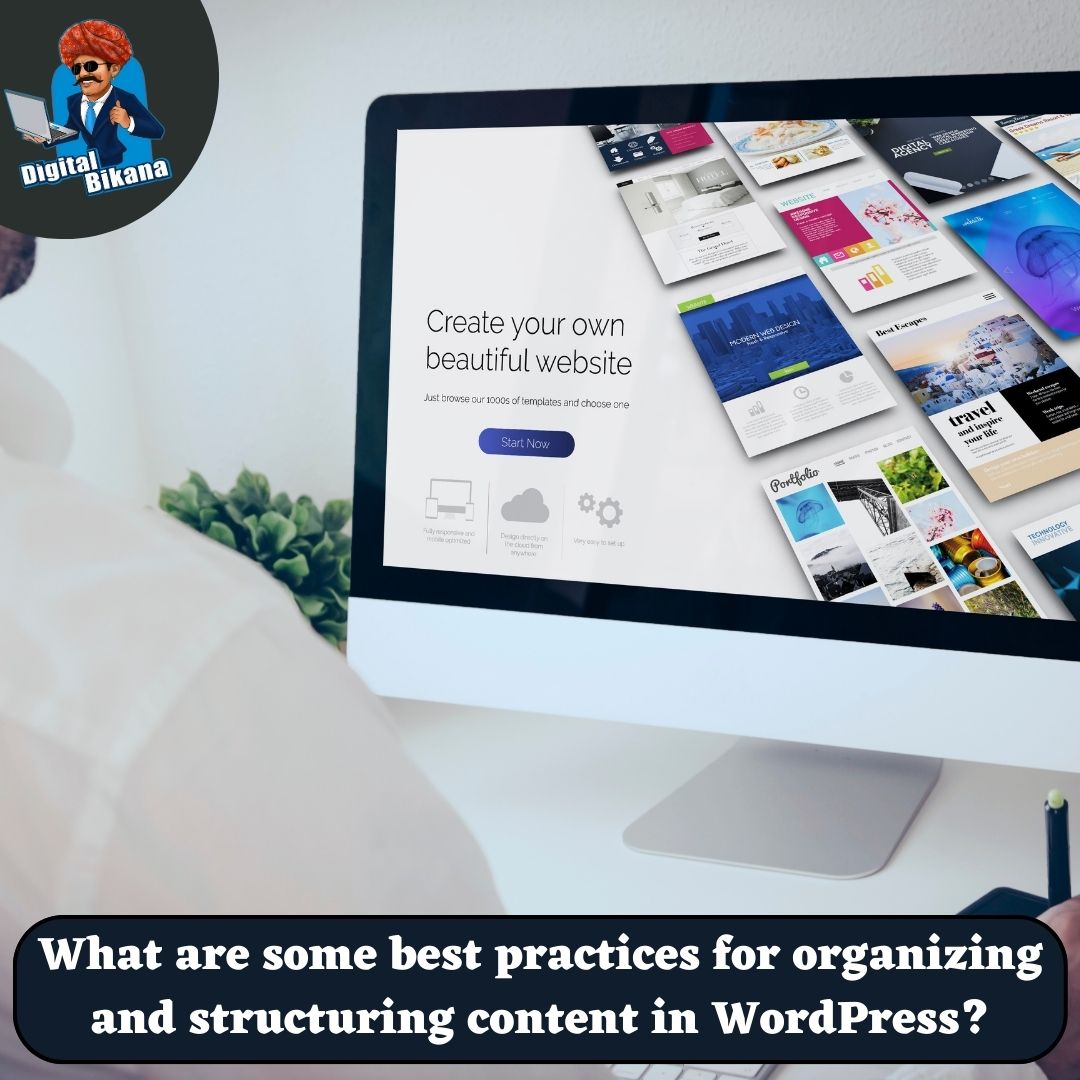What are some best practices for Organizing and Structuring content in WordPress?
In this article we are going to talk about What are some best practices for Organizing and Structuring content in WordPress? Effectively organizing and structuring content is crucial for maintaining a user-friendly and navigable website. In WordPress, there are several powerful tools and best practices that can help you achieve a well-structured and organized content hierarchy.
What are some best practices for Organizing and Structuring content in WordPress?
In this article, we will explore some of the best practices and recommended tools for organizing and structuring content in WordPress.
1. Utilize Categories and Tags
Categories and tags are built-in taxonomies in WordPress that allow you to classify and group content based on specific topics or themes. Here’s how they can be effectively used:
a. Categories
Use categories to create broad sections or topics for your content. For example, if you have a food blog, you can create categories like “Recipes,” “Restaurant Reviews,” and “Cooking Tips.” Assign each post to the relevant category to create a clear content structure.
b. Tags
Tags are more specific descriptors that provide additional information about your content. They can be used to add keywords or highlight important topics. For instance, in a travel blog, you can use tags like “beach destinations,” “adventure travel,” or “budget travel” to categorize your posts further.
By utilizing categories and tags consistently, you can create a logical content hierarchy that enables visitors to navigate and discover related content easily.
2. Implement Hierarchical Pages
WordPress allows you to create hierarchical pages, which are ideal for organizing content with multiple levels of sub-pages. This is particularly useful for websites with complex structures, such as online courses or large documentation sites. By arranging pages hierarchically, you can create a clear and organized site structure that facilitates easy navigation.
To create hierarchical pages, simply create a new page and assign a parent page to it. This way, you can establish parent-child relationships and create a logical hierarchy.
3. Use Custom Post Types
WordPress offers the flexibility to create custom post types, which allows you to define your own content types beyond just posts and pages. Custom post types are ideal for organizing and managing specific types of content. For example:
a. Portfolio
Create a custom post type for showcasing your portfolio items.
b. Testimonials
Use a custom post type to manage customer testimonials.
c. Events
Organize events using a custom post type with fields for date, time, and location.
By utilizing custom post types, you can tailor the content management experience to match your specific needs and ensure a well-structured website.

4. Employ Page Builders
Page builder plugins, such as Elementor, Divi, or Beaver Builder, provide intuitive drag-and-drop interfaces that allow you to design and structure your content visually. These tools offer pre-designed content blocks and layout options, enabling you to create professional-looking pages without extensive coding knowledge. With page builders, you can easily organize and structure your content by arranging elements and sections in a visually appealing manner.
Read Also: How can you create and manage a menu in WordPress?
5. Implement Content Organization Plugins
WordPress offers a variety of plugins designed specifically to assist with content organization and structure. Some popular plugins include “WP Content Copy Protection & No Right Click,” “Content Views,” and “Simple Content Ordering.” These plugins provide features like content protection, customizable content displays, and the ability to reorder posts or pages. Evaluate your specific content organization needs and explore these plugins to find one that suits your requirements.
6. Create a Clear and Consistent Navigation Menu
A well-organized navigation menu is crucial for helping users navigate your website. Create a menu structure that aligns with your content hierarchy. Consider using dropdown menus to provide a deeper level of navigation for subcategories or related content. Make sure the menu is easily accessible and consistently placed across your website’s pages.
7. Optimize Search Functionality
Implementing an efficient search function on your website helps users find relevant content quickly. WordPress has a built-in search widget that you can add to your website’s sidebar or footer. Additionally, there are advanced search plugins available that offer enhanced search capabilities, such as filtering by categories or custom taxonomies.
Read Also: How can you add a search bar to a WordPress website?
8. Utilize Widgets and Sidebars
Widgets are a powerful tool in WordPress for organizing and displaying content in sidebars or widget areas. Utilize widgets to showcase recent posts, popular content, related content, or any other dynamic information that adds value to your users’ experience. Customize your sidebars to align with your content structure and guide users to relevant sections of your website.

Conclusion
Organizing and structuring content in WordPress is essential for maintaining a user-friendly website and ensuring easy navigation for visitors. By utilizing categories, tags, hierarchical pages, custom post types, page builders, content organization plugins, optimizing navigation menus, implementing search functionality, and utilizing widgets and sidebars, you can establish a well-structured content hierarchy that enhances the user experience. Embrace these best practices and tools to effectively organize and structure your content in WordPress, ultimately creating a more engaging and user-friendly website. So, Now I hope you have understood about some best practices for Organizing and Structuring content in WordPress.
You can also checkout this website designing institute to learn digital marketing course by enrolling in our course Or Contact Digital Bikana on +91-8949483728

